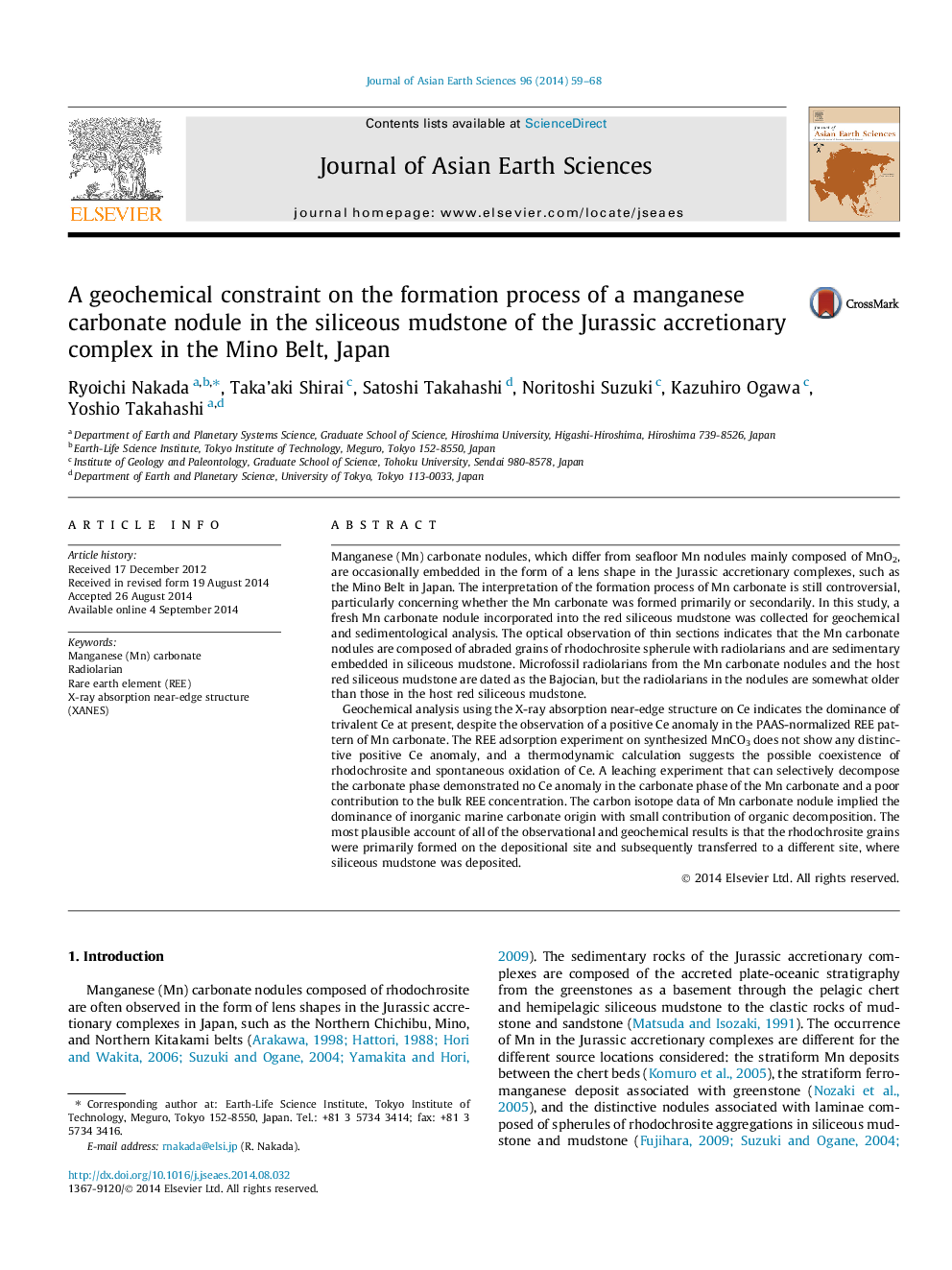| Article ID | Journal | Published Year | Pages | File Type |
|---|---|---|---|---|
| 6444293 | Journal of Asian Earth Sciences | 2014 | 10 Pages |
Abstract
Geochemical analysis using the X-ray absorption near-edge structure on Ce indicates the dominance of trivalent Ce at present, despite the observation of a positive Ce anomaly in the PAAS-normalized REE pattern of Mn carbonate. The REE adsorption experiment on synthesized MnCO3 does not show any distinctive positive Ce anomaly, and a thermodynamic calculation suggests the possible coexistence of rhodochrosite and spontaneous oxidation of Ce. A leaching experiment that can selectively decompose the carbonate phase demonstrated no Ce anomaly in the carbonate phase of the Mn carbonate and a poor contribution to the bulk REE concentration. The carbon isotope data of Mn carbonate nodule implied the dominance of inorganic marine carbonate origin with small contribution of organic decomposition. The most plausible account of all of the observational and geochemical results is that the rhodochrosite grains were primarily formed on the depositional site and subsequently transferred to a different site, where siliceous mudstone was deposited.
Related Topics
Physical Sciences and Engineering
Earth and Planetary Sciences
Geology
Authors
Ryoichi Nakada, Taka'aki Shirai, Satoshi Takahashi, Noritoshi Suzuki, Kazuhiro Ogawa, Yoshio Takahashi,
